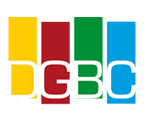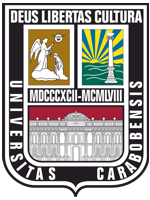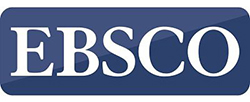Arte interactivo: impulsando el desarrollo creativo
DOI:
https://doi.org/10.46502/issn.1856-7576/2024.18.03.18Palabras clave:
Educación artística, entorno educativo virtual, educación musical, innovaciones educativas, tecnologías virtuales.Resumen
El objetivo de la investigación es analizar el impacto de los proyectos de arte interactivo en el desarrollo de las capacidades creativas de futuros artistas y músicos. En la investigación se emplearon métodos de evaluación (Torrance Tests of Creative Thinking (TTCT), Creative Skills Assessment, Divergent Thinking Test). La fiabilidad de los métodos se comprobó mediante el alfa de Cronbach. Los resultados se comprobaron mediante métodos estadísticos estándar, a saber, chi-cuadrado, desviación media y prueba t. El grupo experimental (GE) demostró una mejora estadísticamente significativa en la generación de ideas (p = 0,04, d = 0,23) y la flexibilidad (p = 0,02, d = 0,43) en comparación con el grupo de control (GC). El estudio halló una diferencia estadísticamente significativa entre el GE y el GC en algunas medidas de creatividad y pensamiento divergente. El GE demostró una mejor generación de ideas y flexibilidad en comparación con el GC. Los resultados obtenidos confirman la hipótesis de la investigación y atestiguan el impacto positivo de los proyectos artísticos virtuales en el desarrollo creativo de los alumnos. Se necesitan estudios con un mayor número de participantes y un mejor control de los factores externos para confirmar definitivamente y comprender mejor las razones de estas discrepancias.
Citas
Androsovych, M. A. (2023). Artistic events in the socio-cultural activity of the community. Cultural and Artistic Studies of the XXI Century: Scientific and Practical Partnership: Materials, 85. (In Ukranian)
Chen, X., Zou, D., Xie, H., & Wang, F. L. (2023). Metaverse in education: Contributors, cooperations, and research themes. IEEE Transactions on Learning Technologies, 16(6), 1111-1129. https://doi.org/10.1109/TLT.2023.3277952
Clapham, M. M. (2011). Testing/Measurement/Assessment. In Mark A. Runco & Steven R. Pritzker (Eds.), Encyclopedia of Creativity (2nd ed.) (pp. 458-646). London: Academic Press. https://doi.org/10.1016/B978-0-12-375038-9.00220-X
Dyka, N., Tretiak, O., Horobets, S., Yakunin, Y., Shopina, M., & Tsybulska, S. (2023). The impact of digitalization of education on the development of key teacher competencies. Journal of the University of Zulia, 14(41), 187-205. https://doi.org/10.46925//rdluz.41.10
Erol, A., Erol, M., & Başaran, M. (2023). The effect of STEAM education with tales on problem solving and creativity skills. European Early Childhood Education Research Journal, 31(2), 243-258. https://doi.org/10.1080/1350293X.2022.2081347
Hannigan, S., & Lee, K. (2023). Art Education approaches that focus on fault-lines and wellbeing (Version 1). Deakin University. Retrieved from https://acortar.link/syJrPa
Hernon, O., McSharry, E., MacLaren, I., & Carr, P. J. (2023). The use of educational technology in teaching and assessing clinical psychomotor skills in nursing and midwifery education: A state-of-the-art literature review. Journal of Professional Nursing, 45, 35-50. https://doi.org/10.1016/j.profnurs.2023.01.005
Hood, E. J., & Travis, S. (2023). Critical reflective practice for art educators. Art Education, 76(1), 28-31. https://doi.org/10.1080/00043125.2022.2131201
Hurst, W., Spyrou, O., Tekinerdogan, B., & Krampe, C. (2023). Digital art and the metaverse: Benefits and challenges. Future Internet, 15(6), 188. https://doi.org/10.3390/fi15060188
Ilma, A. Z., Wilujeng, I., Nurtanto, M., & Kholifah, N. (2023). A systematic literature review of STEM education in Indonesia (2016-2021): Contribution to improving skills in 21st century learning. Pegem Journal of Education and Instruction, 13(2), 134-146. https://doi.org/10.47750/pegegog.13.02.17
Invisible Choir. (n.d.). Invisible Choir [Audio podcast]. Apple Podcasts. Retrieved from https://podcasts.apple.com/us/podcast/invisible-choir/id1407577718
Kaufman, J. C., Plucker, J. A., & Baer, J. (2008). Essentials of Creativity Assessment. Hoboken: John Wiley & Sons. Retrieved from https://acortar.link/cI309a
Lukaka, D. (2023). Art education and its impact on creativity and critical thinking skills: A review literature. International Journal of Arts and Humanities, 1(1), 31-39. http://dx.doi.org/10.61424/ijah.v1i1.15
Munro, T. (2023). Art Education, Its Philosophy and Psychology: Selected Essays. New York: Legare Street Press. Retrieved from https://philpapers.org/rec/MUNAEI-3
Özer, Z., & Demirbatir, R. E. (2023). Examination of STEAM-based digital learning applications in music education. European Journal of STEM Education, 8(1), 2. Retrieved from https://eric.ed.gov/?id=EJ1377876
Pinto, R. F., & Moreno Murcia, J. A. (2023). Towards a globalised vision of aquatic competence. International Journal of Aquatic Research and Eeducation, 14(1), 11. https://doi.org/10.25035/ijare.14.01.11
Potter, D. (2023). Music educators’ perceptions of portfolio-based teacher evaluations in Tennessee. Arts Education Policy Review, 1-10. https://doi.org/10.1080/10632913.2023.2177918
Shaw, R. D., & Bernard, C. F. (2023). School culture change through the arts: A case study of the turnaround arts program. Arts Education Policy Review, 124(3), 171-186. https://doi.org/10.1080/10632913.2021.2023059
Sheremet, O. S., Voluiko, O. M., Posmitna, V. V., Poda, T., & Bidzilya, Y. M. (2021). Sociocultural dominants of developing students’ value intentions: Context of civilization challenges. Amazonia Investiga, 10(45), 31-41. https://doi.org/10.34069/AI/2021.45.09.3
Shi, S. (2024). Research on the innovation path of music education in higher vocational colleges and universities in the context of the new era. Applied Mathematics and Nonlinear Sciences, 9(1). https://doi.org/10.2478/amns-2024-0727
Torrance, E. P. (1972). Predictive validity of the Torrance Tests of Creative Thinking. The Journal of Creative Behavior, 6(4), 236-252. https://doi.org/10.1002/j.2162-6057.1972.tb00936.x
Touch Pianist. (n.d.). Touch Pianist: Press kit. Retrieved from https://touchpianist.com/presskit/index.html
Vuk, S. (2023). Development of creativity in elementary school. Journal of Creativity, 33(2), 100055. https://doi.org/10.1016/j.yjoc.2023.100055
Yang, X., Cheng, P. Y., Liu, X., & Shih, S. P. (2023). The impact of immersive virtual reality on art education: A study of flow state, cognitive load, brain state, and motivation. Education and Information Technologies, 1-20. https://doi.org/10.1007/s10639-023-12041-8
Zhang, B., Sun, S., & Mei, R. (2023). Effect of professional identity on depression in art education students: Academic emotion as a mediator. Social Behavior and Personality: An International Journal, 51(8), 1-8. https://doi.org/10.2224/sbp.12453
Zhang, J., Peter, J. D., Shankar, A., & Viriyasitavat, W. (2024). Public cloud networks oriented deep neural networks for effective intrusion detection in online music education. Computers and Electrical Engineering, 115, 109095. https://doi.org/10.1016/j.compeleceng.2024.109095
Descargas
Publicado
Cómo citar
Número
Sección
Licencia
Derechos de autor 2024 Galyna Buchkivska, Valentyna Greskova, Liliia Kachurynets, Liutsiia Tsyhaniuk, Olena Mozoliuk

Esta obra está bajo una licencia internacional Creative Commons Atribución 4.0.















